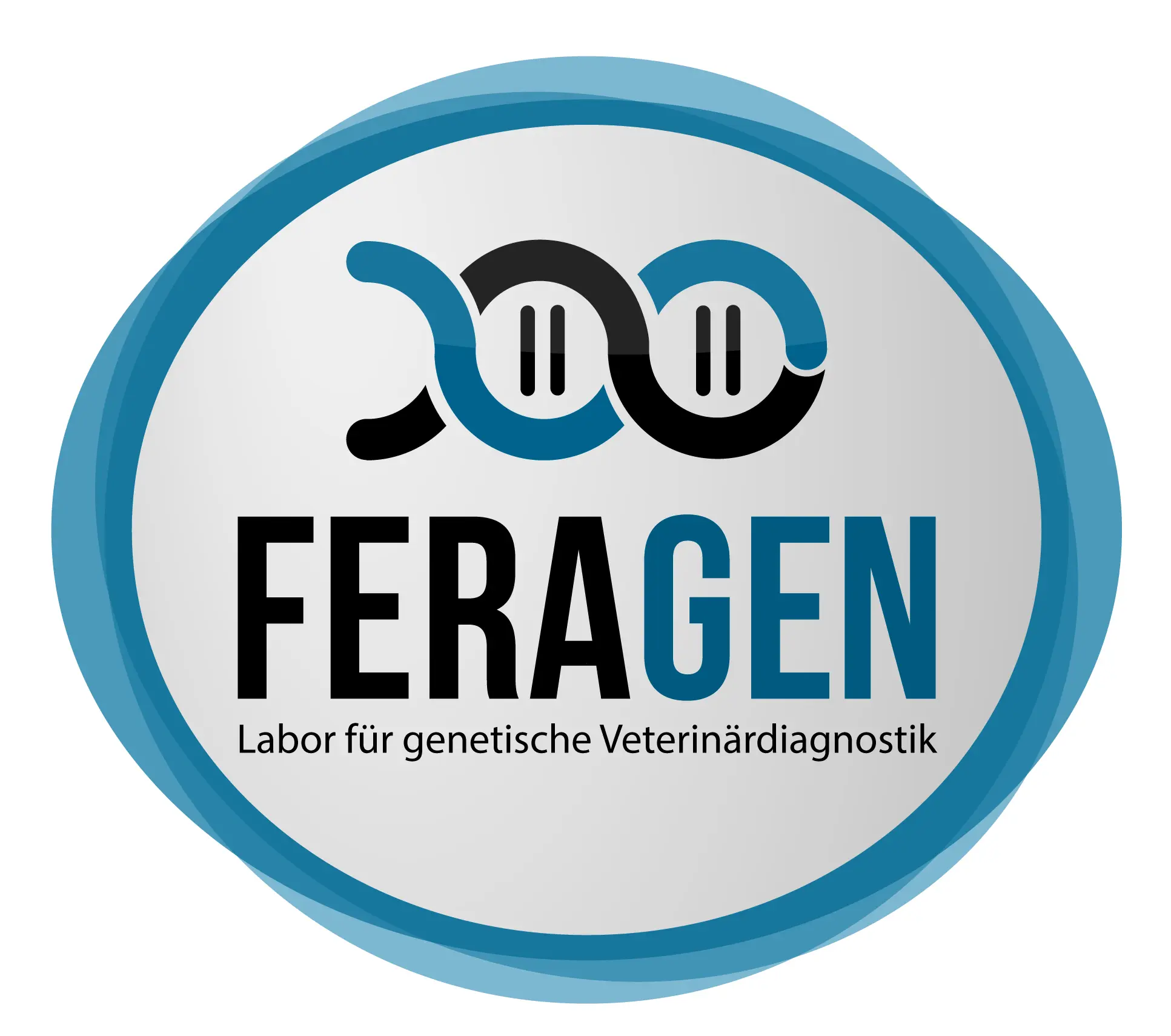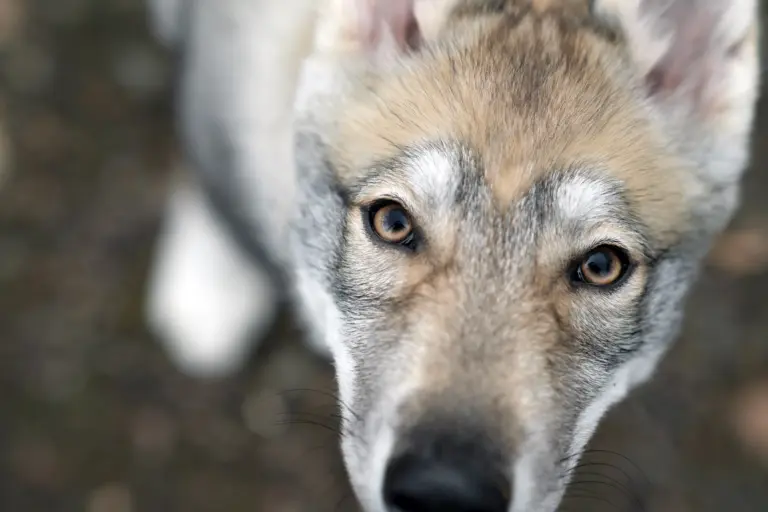This blog series was kindly made available to us by FERAGEN. Thank you very much!
www.feragen.at

MHC genes and genetic diversity
It is well known that there is a spark of truth and wisdom in every proverb:
‘So let he who binds himself forever see if he can’t find something better!’
Who hasn’t heard this old saying? In previous articles, we have already reported in detail on the importance of heterozygosity in the DLA genes. It is not only important for single individuals, but for entire populations. The greater the genetic diversity in the DLA genes, the better an adequate response to different pathogens or changing environmental conditions can be achieved. The connection between very specific genes or gene combinations of DLAs and autoimmune diseases has also been discussed many times.
In this article, the DLA genes will be examined from a completely different angle in order to demonstrate once again the important and diverse role they play in the life of an individual.
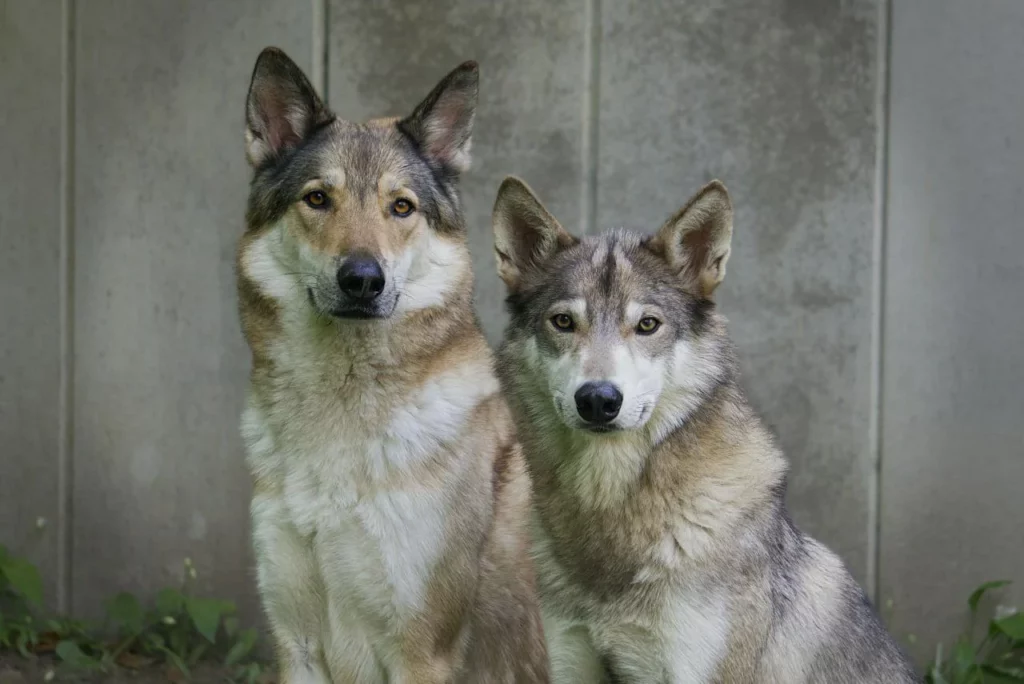
How MHC genes influence odour
Chemosensors – primitive but very special!
In the immune system of vertebrates, MHC genes fulfil fundamental functions when it comes to distinguishing the body’s own structures from those that are foreign to the body and therefore potentially dangerous. The MHC genes are highly variable and exist in different versions, the so-called alleles. A high degree of MHC similarity is a good indicator that organisms are related. Studies within different species have shown that individuals are able to compare their own MHC genotype with the genotypes of other conspecifics.
This is done via the so-called chemosensory system. It is one of the most primitive senses, but has developed into a very specialised sensory system. Chemical signals from the environment can be perceived by corresponding receptors in the body and processed by the nervous system. Thanks to this mechanism, individuals can not only perceive their environment, but also evaluate it and react to it. The chemosensory system also serves to perceive pheromone releases and trigger behavioural changes or physiological changes such as sexual reactions. Pheromones are messenger substances and serve to subconsciously transmit information about the species, sex or genetic identity of a living being. The genes of the MHC complex provide the basis for the development of a set of unique olfactory ciphers, the ‘chemosensory system is the perception of chemical messengers via the sense of smell and taste. This primitive sense helps living organisms to recognise their environment…’ can be recorded via chemosensation (Yamazaki et al. 1999).
A mysterious scent fills the air
Exactly how the mechanism of MHC-specific odour recognition works is still an unresolved mystery. However, it is assumed that proteins can bind to the MHC molecules, just as pathogens can, for example, and produce the individual odour. Each MHC molecule recognises very specific proteins, resulting in unique MHC-protein complexes for each individual.
If cells in the body are destroyed and replaced by new ones, the MHC-protein complexes detach from the discarded cells and enter body fluids such as blood, saliva or urine. The resulting odour can be perceived unconsciously (Yamazaki et al. 1999).
MHC genes influence mate choice and mating success
The fact that MHC genes have an important influence on the regulation and function of the immune system is well studied and known. In addition to this task, numerous scientific studies have shown that MHC genes also play an important role in mate choice in vertebrates via odour signals (Milinski et al. 2005; O’Dwyer & Nevitt 2009). The purpose of this mechanism is to keep the diversity of MHC genes high within a population through targeted mate selection in order to be able to react accordingly depending on the circumstances, e.g. parasite infestation. In humans, this can even go so far that the risk of miscarriage of an embryo is many times higher in the presence of an identical or partially identical HLA type compared to partners with different HLA types (Ober et al. 1998).
In sticklebacks, for example, a fish that lives in the northern hemisphere, the females recognise the most resistant males by smell. Males that have many MHC variants have the best chances of reproducing. The females thus ensure the preservation of genetic diversity and the survival of the offspring (Reusch et al. 2001)
The MHC genes, which include the DLA genes in dogs, are not only an important part of the immune system, they also influence the body odour of individuals. This odour provides a wide range of information about a living being that can be perceived subconsciously by its counterpart. It also influences mate choice and contributes to the maintenance of genetic diversity.
Sniffing for the right partner
Who hasn’t sniffed their loved one’s T-shirt when he/she was far away and the pleasant odour was supposed to make up for the painful separation? In a similar sniffing experiment, the relationship between different HLA genes (the human equivalent of the dog’s DLA genes) and a preferred choice of partner was investigated (Wedekind et al. 1995). Women were asked to judge on a scale whether the odour of ‘male T-shirts’ was pleasant or repulsive after they had been worn by men for two days.
Three of the T-shirts to be evaluated were from men with different HLA types compared to those of the women and three were from men with similar HLA types. Women who did not take oral contraceptives rated the odour of men with different HLA genes as more pleasant compared to those with the same HLAs. The data suggest that women also unconsciously use body odour as an indicator in mate choice to increase diversity in HLA genes (and possibly genome-wide diversity). Interestingly, women taking oral contraceptives rated the body odour of HLA-like men as more pleasant, which may be due to the fact that pregnancy is faked with medication.

The genetic matchmaking service
‘What women want’
Females are extremely choosy, especially when it comes to finding the right reproductive partner. This choice is made with the genetic advantages for the offspring in mind. These advantages include increased immunocompetence and parasite resistance (Hamilton & Zuk 1982; Folstad & Karter 1992), which should subsequently ensure the survival of the offspring and lead to reproductive success. This means that not only the females benefit from preferential mating with genetically different males, but also the offspring, in which there is an increase in heterozygosity and thus a higher genetic quality.
A seal of genetic quality
Genetic quality provides information about the fitness of an organism and determines reproductive success or failure. An individual has a higher genetic quality if it has a gene variant or genotype that leads to an increase in fitness compared to individuals that do not have this allele or genotype. Fitness is the so-called Lifetime Reproductive Success, which is composed of survival and reproductive success (Kokko et al. 2003).
The MHC genes are a perfect example of how they can act as both good and compatible genes. A good gene is an allele that leads to an increase in fitness, regardless of what the rest of a creature’s DNA looks like (Neff & Pitcher 2005). In our dogs, DLA gene combinations are known to lead to increased protection against certain diseases. Such gene combinations would be a typical example of good genes. Compatible genes, on the other hand, are alleles that only lead to an increase in fitness if a very specific genotype is present in an individual. Using the example of our dog, a female dog would prefer to mate with a male dog that has different DLA genes compared to hers. It does not matter whether the bitch has heterozygous and homozygous DLA gene combinations. Thanks to targeted mating, the bitch can maximise the genetic diversity of her offspring (Neff & Pitcher 2005). As already mentioned several times, heterozygous organisms have a much broader spectrum of foreign peptides that they can present to the T cells (Klein & Figueroa 1986).
The following examples illustrate the difference between good and compatible genes:
Chinook salmon:
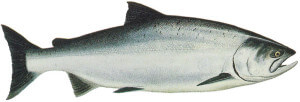
Using artificial fertilisation of Chinook salmon eggs (Oncorhynchus tshawytscha), scientists succeeded in producing offspring that differed from each other in the diversity of MHC genes. This means that the siblings were either homozygous or heterozygous in the MHC-II genes. The different ‘families’ were then exposed to infectious haematopoietic necrosis virus (IHVN). This virus is a major source of viral infection of salmon in North America. In 7 out of 10 infected families, heterozygous offspring showed a significantly higher survival rate compared to homozygotes (Arkush et al. 2002). Similar results were obtained in experiments with mice (McClelland et al. 2003).
Atlantic salmon:

However, the MHC genes are also an excellent example of the ‘good genes’ and the following example illustrates the difference to the compatible genes even better. In this experiment, the relationship between MHC alleles and resistance to the bacterium Aeromonas salmonicida in Atlantic salmon was investigated. Siblings were bred that differed from each other in their MHC allele combinations. The scientists paid particular attention to two alleles labelled e and j. Eighteen days after infection, fish with the e allele showed the highest survival rate and those with the j allele the lowest. In this case, it was not primarily the heterozygosity of the individuals that was important for an increase in fitness, but the presence of a specific allele, namely the e allele, which represents a ‘good gene’ (Lohm et al. 2002).
After mating is before mate selection
Choosing the right partner
Anyone who believes that the choice of partner is finally finalised after mating is mistaken. Females are able to increase the genetic quality of their offspring. This so-called prenatal selection can take place after mating through sperm competition, cryptic selection (Rülicke et al. 1998) or foetal selection (Eberhard 1996; Birkhead & Moller 1998) of the females. Regardless of which mechanism is used, the aim is to increase the heterozygosity of the offspring and reduce the degree of inbreeding. In most cases, dogs do not have the opportunity to choose their mating partners themselves, which is why only post-mating selection mechanisms are available.
The competition of masculinity
Sperm competition is the battle to see which sperm from one or more males will fertilise the female’s egg. This means that a male that has mated with a female does not necessarily have to be the father of the offspring. The decision about reproductive success is made during or after copulation and also depends on whether a female has mated with several males. For example, there are indications that the sperm of the male that, together with the female, provides the fittest offspring will have the highest fertilisation success.
The competitiveness of sperm appears to be an indicator of good genes (citation). In an experiment (Evans et al. 2003), artificial insemination was used to investigate the genetic quality and competitiveness of the sperm of guppies. Scientists fertilised female guppies with the same number of sperm from two males. However, these differed in the proportion of orange areas on the body surface. The orange areas appear to be an indicator of the viability of the offspring. Genetic markers were used to establish a connection between the orange areas and paternity. Males with more orange areas sired more offspring than males with less coloured areas.
Fetal selection
Even if fertilisation has already taken place, females can take measures to ensure high genetic diversity in the offspring. An extreme example of this is when there are abortions of offspring with a low genetic quality. This appears to be a mechanism that occurs primarily in viviparous species, where females nourish the developing embryo via a placenta (Zeh 1997). Spontaneous abortions in humans, for example, show a connection with X-linked recessive diseases (Lanasa et al. 2001, Campana et al. 1986). Furthermore, there is a much higher risk of spontaneous abortions in couples who share one or more of the same HLA loci.
Enabling natural ingenuity
Nature has produced an enormous amount of ingenuity to maintain and protect the genetic quality of living organisms. It is the key to the survival of entire populations and the adaptation to changing and challenging environmental conditions. The preservation of genetic diversity begins with the choice of reproductive partner. There are numerous hurdles to overcome if males are to have any chance at all of reproducing. Females are demanding and want to be courted. In addition, there are usually competitors who also have high hopes and even after mating, this does not necessarily have to be successful. A lot of effort for genetic diversity! Even if reproduction may appear tribal, the mechanisms behind it are certainly not. Even if they are only perceived subconsciously. But how much primal instinct in mate selection is still there in our dogs? In most cases, the decision as to which partner is suitable and which is not is taken away from them. With the new reports of genetic diseases that our dogs suffer from every day, it is tempting to ask how good the choice made by humans really is?
It happens again and again that the mating is unsuccessful, the bitches remain empty or the puppies are reborn. This happens more often with some breeds than with others. Efficient defence mechanism of the bitch to prevent weak offspring? It is often possible to tell from the dog’s behaviour before mating whether it will be successful.
There are dogs that love each other and those that literally can’t smell each other.
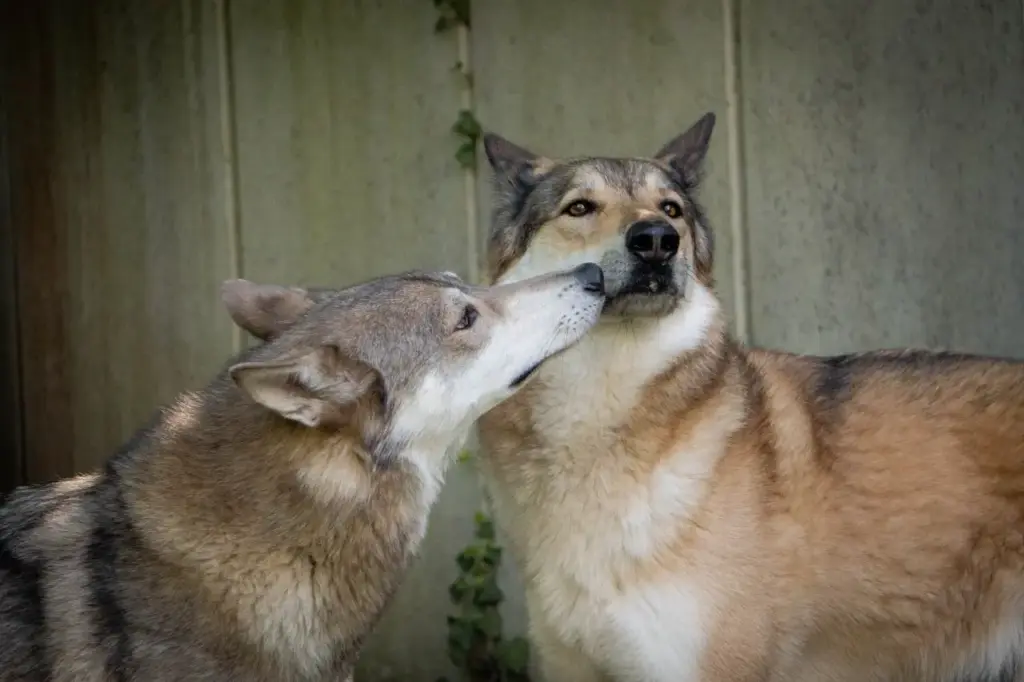
Want to find out more?
If you are interested in the topic or would simply like to know more, please contacti FERAGEN or us directly and we will put you in touch.


